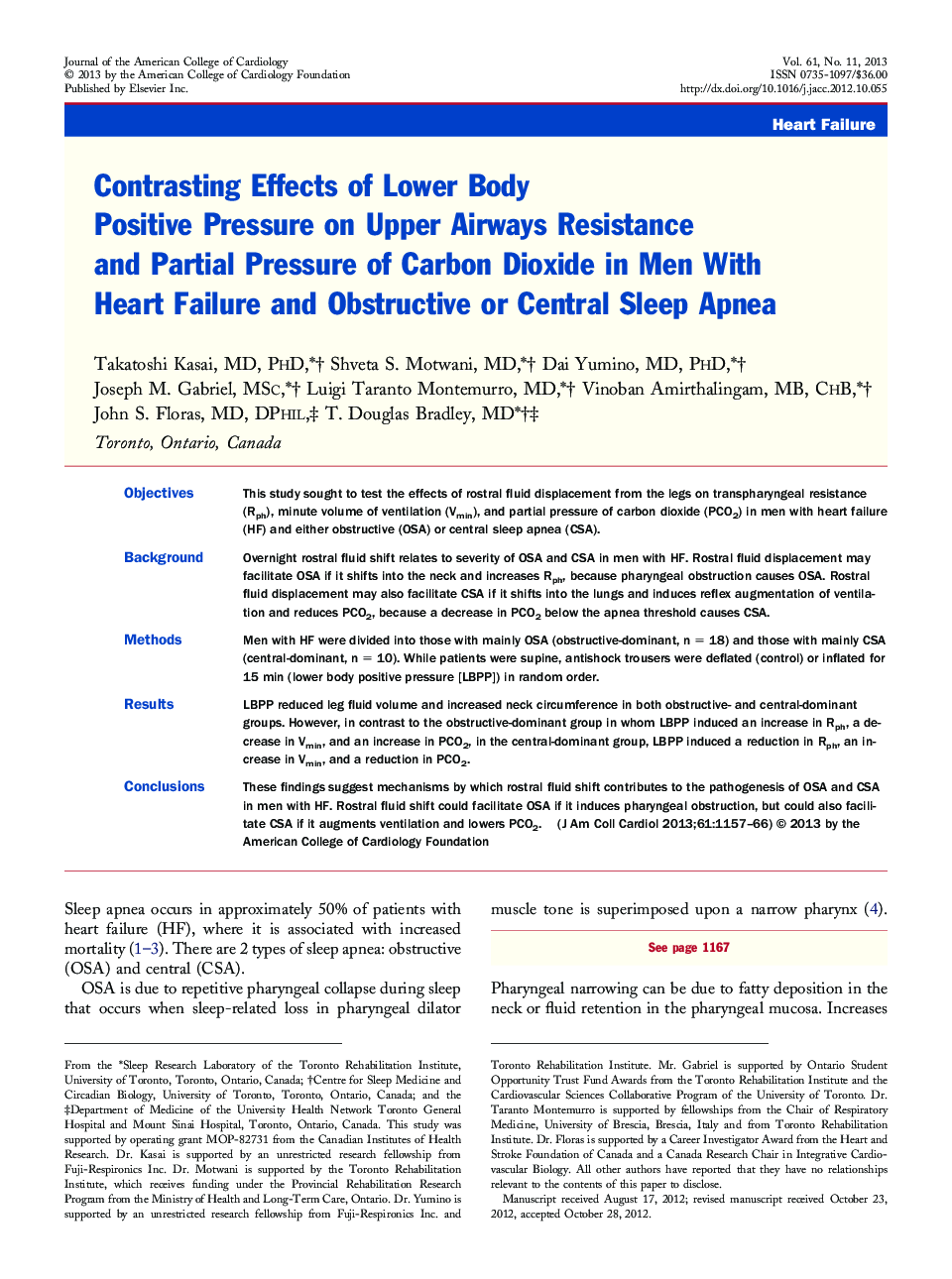| Article ID | Journal | Published Year | Pages | File Type |
|---|---|---|---|---|
| 5983300 | Journal of the American College of Cardiology | 2013 | 10 Pages |
ObjectivesThis study sought to test the effects of rostral fluid displacement from the legs on transpharyngeal resistance (Rph), minute volume of ventilation (Vmin), and partial pressure of carbon dioxide (PCO2) in men with heart failure (HF) and either obstructive (OSA) or central sleep apnea (CSA).BackgroundOvernight rostral fluid shift relates to severity of OSA and CSA in men with HF. Rostral fluid displacement may facilitate OSA if it shifts into the neck and increases Rph, because pharyngeal obstruction causes OSA. Rostral fluid displacement may also facilitate CSA if it shifts into the lungs and induces reflex augmentation of ventilation and reduces PCO2, because a decrease in PCO2 below the apnea threshold causes CSA.MethodsMen with HF were divided into those with mainly OSA (obstructive-dominant, n = 18) and those with mainly CSA (central-dominant, n = 10). While patients were supine, antishock trousers were deflated (control) or inflated for 15 min (lower body positive pressure [LBPP]) in random order.ResultsLBPP reduced leg fluid volume and increased neck circumference in both obstructive- and central-dominant groups. However, in contrast to the obstructive-dominant group in whom LBPP induced an increase in Rph, a decrease in Vmin, and an increase in PCO2, in the central-dominant group, LBPP induced a reduction in Rph, an increase in Vmin, and a reduction in PCO2.ConclusionsThese findings suggest mechanisms by which rostral fluid shift contributes to the pathogenesis of OSA and CSA in men with HF. Rostral fluid shift could facilitate OSA if it induces pharyngeal obstruction, but could also facilitate CSA if it augments ventilation and lowers PCO2.
